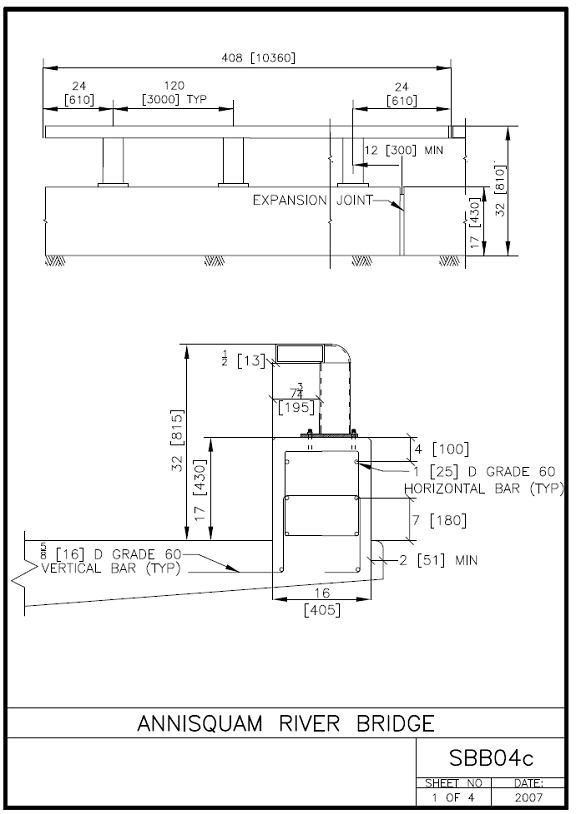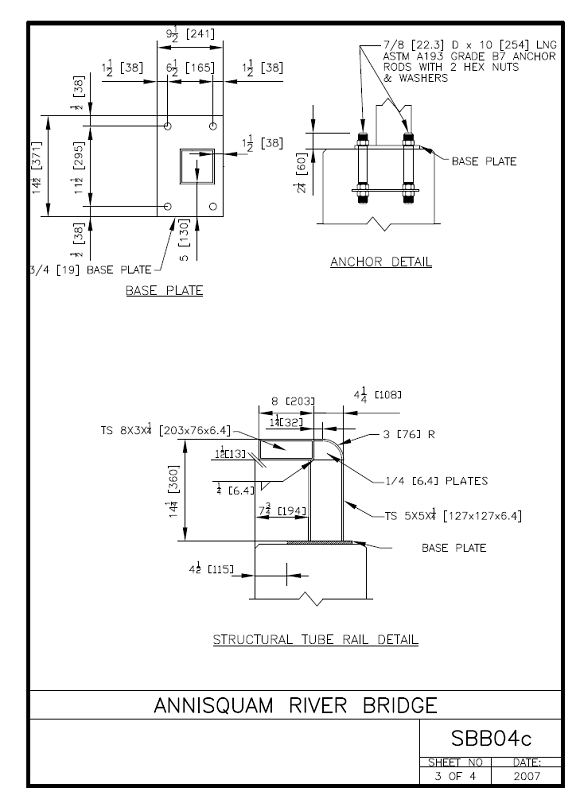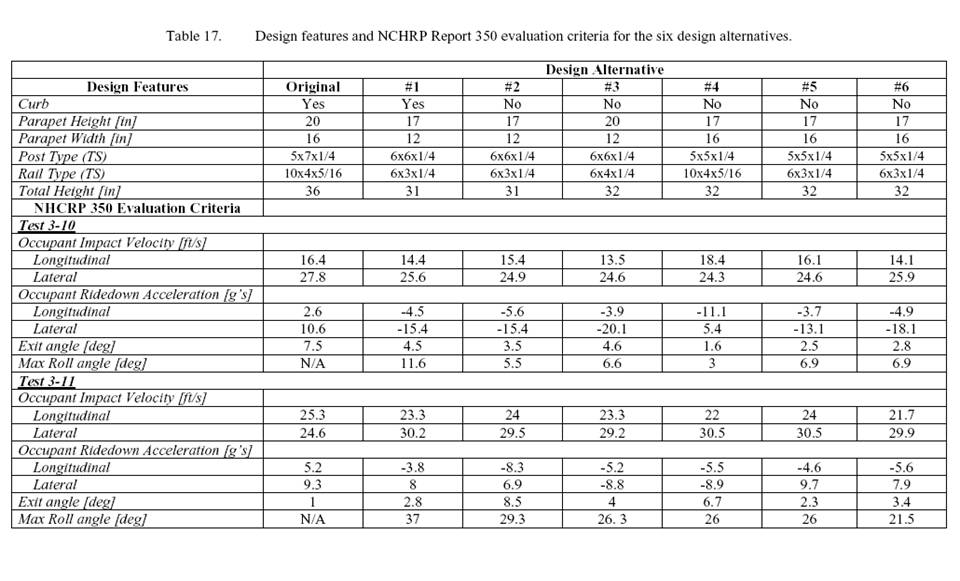Safety Eligibility Letter B-168
HSSD/B-168
Federal Highway Administration |
400 Seventh St., S.W. Washington, D.C. 20590 |
February 8, 2008
In Reply Refer To: HSSD/B-168
Malcolm H. Ray, P.E., Ph.D.
Department of Civil Engineering
Worcester Polytechnic Institute
100 Institute Road
Worcester, MA 01609
Dear Dr. Ray:
Thank you for your letter of September 6, 2007, requesting the Federal Highway Administration’s (FHWA) acceptance of a Massachusetts Highway Department (MHD) modification to the Minnesota Type Three Combination Bridge Rail. You requested that we find this barrier acceptable for use on the National Highway System (NHS) under the provisions of the National Cooperative Highway Research Program (NCHRP) Report 350 "Recommended Procedures for the Safety Performance Evaluation of Highway Features.” Crashworthiness of the Test Level 3 (TL-3) barrier, intended for use on the Annisquam River Bridge, was evaluated using finite element modeling.
Introduction
The FHWA guidance on crash testing of roadside safety hardware is contained in a memorandum dated July 25, 1997, titled “INFORMATION: Identifying Acceptable Highway Safety Features.”
Description
The 35-inch tall Minnesota railing was tested to NCHRP Report 350 TL-4 and accepted by the FHWA in our memorandum “Crash Testing of Bridge Railings” dated May 30, 1997. The
32-inch tall Annisquam/MHD version (shown in the enclosed drawings) varies from the tested railing in a number of dimensions including overall height, height of concrete parapet, and details of the post and rail. The dimensions and test results of the Minnesota TL-4 rail, and the six different Annisquam Bridge railing proposals that were evaluated with finite element analysis (FEA) for TL-3, are detailed in “Table 17”, enclosed for reference.
Current FHWA policy does not allow the substitution of computer modeling for the NCHRP Report 350 crash test evaluation of new devices. However, we have considered the results of FEA when evaluating modified devices that had already been evaluated and accepted using full scale crash testing. Because the requested modifications retain the significant structural details of the Minnesota design, and the requested railing is comparable to other crash tested concrete-parapet-and-steel-rail designs, we concur in your assessment.
Findings
The bridge rail system described above and detailed in the enclosed drawings is acceptable for use on the NHS under the NCHRP Report 350 Test Level 3 conditions tested, when proposed by a highway agency.
Please note the following standard provisions that apply to FHWA letters of acceptance:
- This acceptance is limited to the crashworthiness characteristics of the device(s).
- Any changes that may adversely influence the crashworthiness of the device will require a new acceptance letter.
- Should the FHWA discover that the qualification testing was flawed, that in-service performance reveals unacceptable safety problems, or that the device being marketed is significantly different from the version that was crash tested, it reserves the right to modify or revoke its acceptance.
- You will be expected to supply potential users with sufficient information on design and installation requirements to ensure proper performance.
- You will be expected to certify to potential users that the hardware furnished has essentially the same chemistry, mechanical properties, and geometry as that submitted for acceptance, and that they will meet the crashworthiness requirements of the FHWA and the NCHRP Report 350.
- To prevent misunderstanding by others, this letter of acceptance, designated as number B-168, shall not be reproduced except in full. This letter, and the test documentation upon which this letter is based, is public information. All such letters and documentation may be reviewed at our office upon request.
- This acceptance letter shall not be construed as authorization or consent by the FHWA to use, manufacture, or sell any patented device for which the applicant is not the patent holder. The acceptance letter is limited to the crashworthiness characteristics of the candidate device, and the FHWA is neither prepared nor required to become involved in issues concerning patent law. Patent issues, if any, are to be resolved by the applicant.
Sincerely yours,
David A. Nicol |




